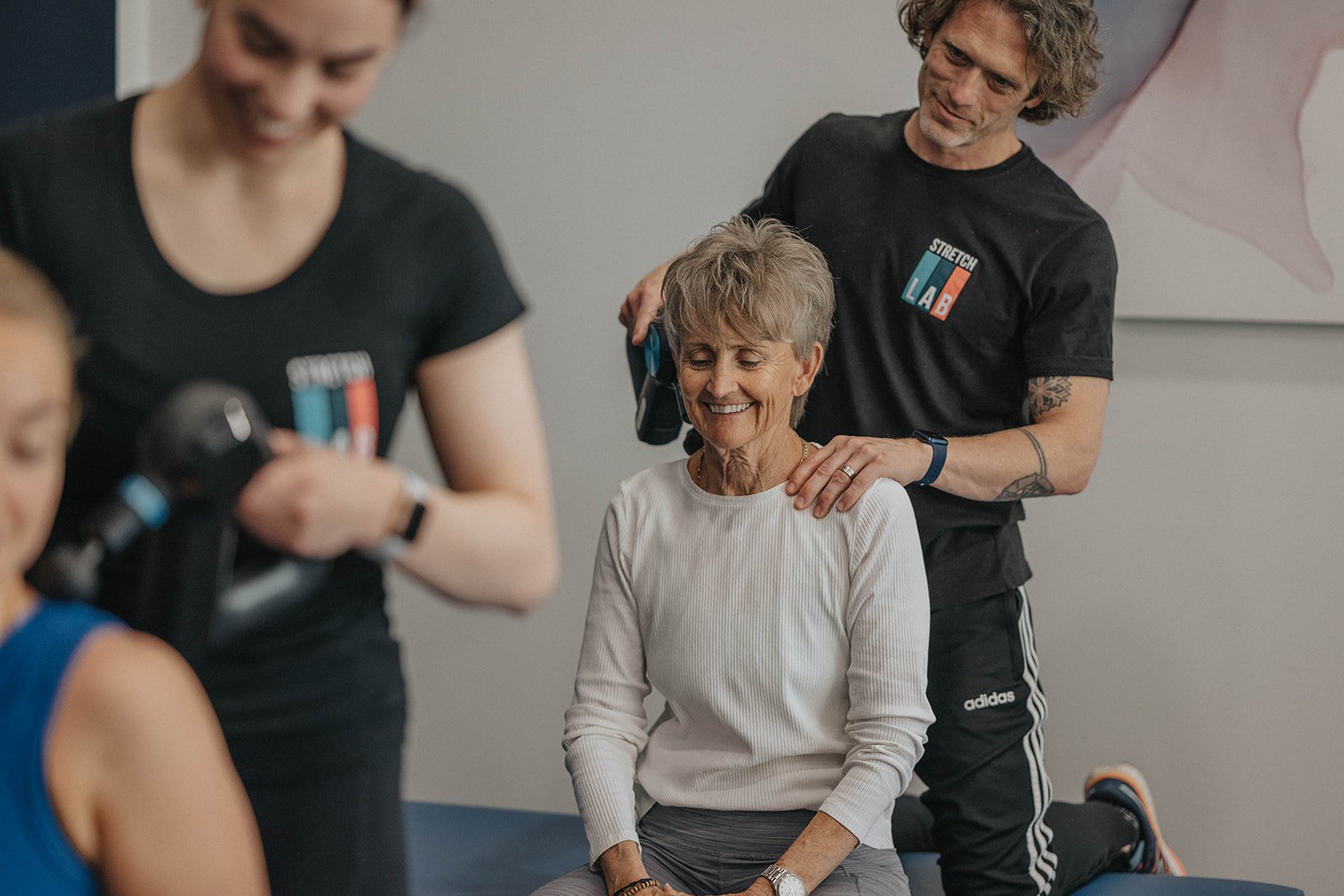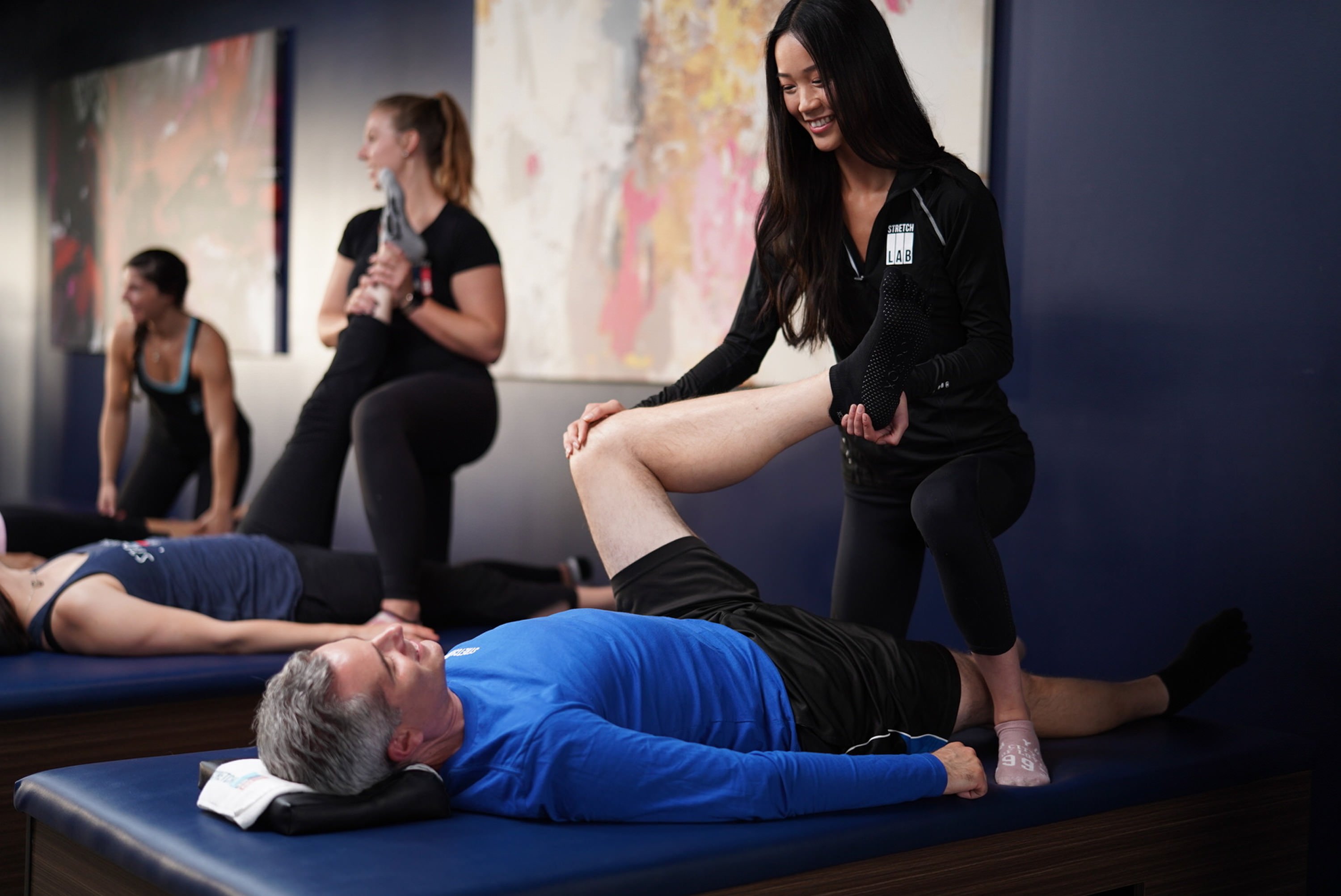As we get older, staying active and maintaining our flexibility can sometimes feel like a bit of a challenge. But did you know there is one simple activity that can keep you active, move more easily, feel more relaxed, and even boost your mood? That’s right—stretching!
Stretching isn’t just for athletes or fitness enthusiasts before a particularly intense workout. It can be a game-changer for seniors looking to improve their quality of life. Sounds great, doesn’t it?
In this post, we get into the many benefits of stretching for seniors. We’ll explore how it can improve flexibility, increase circulation, and even help you manage stress. Plus, we’ll share practical tips and routines tailored specifically for seniors, so you can get started with confidence.
Why Is Stretching Important?
As we grow older, it’s common for our muscles to lose some of their natural elasticity. This gradual decrease in flexibility can make everyday tasks, like reaching for something on a high shelf or bending down to tie your shoes, feel more challenging.
But, it’s not just a minor inconvenience; if you’re not careful it can also increase the risk of falls and injuries.
A 2022 study found that adults over 55 experience a reduction in the range of motion in their joints. But here’s the good news: incorporating stretching into your daily routine can make a significant difference.
- Alleviate discomfort associated with aging: For seniors dealing with specific health issues such as arthritis, osteoporosis, or chronic pain, targeted stretching exercises can provide relief and support their overall health.
- Reduce Stiffness: By keeping your muscles and joints flexible, you can alleviate the stiffness that often comes with aging.
- Decrease Pain: Stretching can help reduce muscle and joint pain, providing much-needed relief and comfort during daily activities.
- Improve Walking and Mobility: Enhanced flexibility leads to smoother, more effortless movement, making walking and other activities easier and more enjoyable.
- Increase Flexibility: Targeted stretches can help maintain and even improve your flexibility, keeping you agile and mobile.
- Enhance Balance and Posture: Improved flexibility supports better balance and posture, which is crucial for preventing falls and maintaining overall stability.
- Make Daily Routines Easier: With an increased range of motion, daily activities become less strenuous and more manageable.
- Promote Relaxation and Well-Being: Stretching isn’t just physical—it’s also a great way to relax and boost your mood, leaving you feeling refreshed and good about yourself.
Simple Yet Important Stretching Exercises
Aging can indeed take a toll on our bodies, making it more challenging to stay mobile and flexible. But don’t worry—stretching can be a fantastic way to maintain and even improve your mobility as you age. Here are some effective stretching exercises tailored specifically for seniors that can help you stay limber and comfortable.
1. Standing Quadriceps Stretch
Our legs often need multiple stretches to keep them in top shape. This exercise targets the quadriceps, the muscle on the front of your thigh.
- Start by doing a bit of light walking to warm up your muscles.
- Grab a chair or the back of a couch for balance.
- Hold onto the support with your left hand. Bend your right knee and, using your right hand, gently pull your foot towards your bottom.
- Hold this stretch for 10 to 30 seconds, then release and switch to your left leg.
- Alternative: For those who find standing difficult, try the seated ankle stretch. Sit on the edge of a chair with an unobstructed area underneath. Place your right foot under the chair and gently press down until you feel a stretch. Hold for 20 to 30 seconds, then switch to the left foot.
2. Seated Knee to Chest
This stretch not only benefits your legs but also helps improve mobility in your hips and knees while stretching your lower back.
- Sit comfortably in a chair
- Grasp your right knee and slowly pull it towards your chest. Once you feel a comfortable stretch, hold for 10 to 30 seconds.
- Gently lower your leg back to the floor and repeat with your other leg.
3. Hamstring Stretch
Targeting your lower back and legs, this stretch helps decrease stiffness and keeps your muscles mobile and loose.
- Sit on a firm surface and extend one leg out in front of you.
- Slowly lean forward, reaching towards your thigh, knee, or ankle. Be careful not to overextend.
- Hold for 10 to 30 seconds, then gently lower your leg and repeat on the other side.
4. Wall Stretch
This is a simple yet effective stretch that focuses on your calves and lower body flexibility.
- Stand facing a wall.
- Place your right foot in front of your left and press both hands against the wall for support. Slowly bend your knees until you feel a stretch in your lower leg.
- Hold for 10 to 30 seconds, then switch feet and repeat the stretch.
5. Overhead Side Stretch
This stretch is great for loosening up your abdomen, back, and shoulders, and it can be done standing or sitting.
- Stand with your feet shoulder-width apart and raise your arms over your head, interlocking your fingers if you like.
- Lean to the left while keeping your torso long, and hold for 10 to 30 seconds.
- Return to the centre and repeat on the right side.
- Seated Variation: If standing is challenging, you can do this stretch sitting in a tall chair. Keep your hips, knees, and toes facing forward. Lift your arms above your head and lean gently to each side for 10 to 30 seconds. If needed, place your arms on your hips or by your sides.
Stretching Exercises for Common Senior Health Issues
For seniors dealing with specific health issues such as arthritis, osteoporosis, or chronic pain, targeted stretching exercises can provide relief and support their overall health. Gentle stretching movements can help alleviate joint stiffness and reduce the discomfort associated with arthritis. Stretching exercises targeted at strengthening the core muscles can alleviate back pain and improve overall posture. Tailoring stretching routines to address specific health concerns empowers seniors to manage their conditions effectively while reaping the benefits of improved flexibility and mobility.
Precautions and Safety Tips for Senior Stretching
While stretching offers numerous benefits for seniors, it is essential to approach this practice with caution and mindfulness. Seniors should always consult with their healthcare providers before starting a new stretching routine, especially if they have underlying health conditions or concerns. It's important to start slowly and gently, gradually increasing the intensity and duration of stretches as the body becomes more accustomed to the movements.
Seniors should listen to their bodies and avoid overstretching, which can lead to injury. Incorporating proper breathing techniques during stretching can enhance the overall experience and promote relaxation. Additionally, ensuring that the stretching environment is safe and free of obstacles can minimise the risk of accidents. By being mindful of their bodies and following safety guidelines, seniors can enjoy the benefits of stretching while reducing the risk of injury.
When To Stretch?
Knowing the best time to stretch can make a significant difference in how effective your stretching routine is. Depending on your activity level and mobility, the timing of your stretches can vary.
If you’re someone who regularly engages in exercise like jogging, walking, or other physical activities the ideal time for stretching is at the end of your exercise session when your muscles are already warm and loose. This is when stretching is most effective for improving flexibility and reducing muscle tension.
If your daily routine includes less physical activity, stretching can be done at virtually any time of the day. To build a consistent habit, consider incorporating stretches into a regular part of your daily routine, such as after breakfast or a shower.
Even if you’re not engaging in vigorous exercise, it’s a good idea to do a few minutes of light movement, like walking around your home, before stretching. This helps to loosen up your muscles and prepare them for the stretches.
Stretching Considerations
- Don’t Forget to Breathe: Breathing deeply and steadily during stretches helps relax your muscles and enhances the effectiveness of the stretch.
- Avoid Bouncy Movements: Stretching should be smooth and controlled. Avoid bouncing or jerking movements, as they can lead to injury.
- Seek Professional Advice: If you have underlying health conditions or specific concerns, consulting a professional can provide guidance tailored to your needs. They can recommend safe and effective stretches for your situation.
- Consider Assisted Stretching: Sessions at a Stretch Lab or with a qualified therapist can offer guided and personalized stretches, helping you improve flexibility and mobility safely.
- Listen to Your Body: Pay attention to how your body feels during stretches. Avoid pushing yourself too far to prevent overstretching and potential injuries.
- Ensure a Clear Space: Make sure the area where you’re stretching is free from obstacles to avoid accidents and ensure a smooth stretching experience.
The Benefits Of Assisted Stretching
Assisted stretching is a unique and effective approach to enhancing flexibility and overall well-being, especially for seniors. Participating in assisted stretching classes, such as those offered at Stretch Lab, can provide a range of benefits that go beyond what you might achieve on your own.
- Personalised and Effective Stretching: Our assisted stretching classes are led by qualified instructors who specialise in helping individuals improve their flexibility and mobility. These are tailored programs that address your specific needs and goals, ensuring that you receive the most effective stretching routine possible.
- Supportive and Inclusive: One of the greatest advantages of assisted stretching is the supportive environment it provides. Whether you’re new to stretching or have specific mobility challenges, these classes offer a welcoming space where you can feel comfortable and encouraged.
- Guided Support: Our instructors offer hands-on assistance and guidance, ensuring that each stretch is performed correctly and safely. This support helps you achieve proper form and maximise the benefits of each exercise.
- Assistance with Modifications: Everyone is different, and what works for one person might not work for another. Our assisted stretching classes are designed to accommodate a variety of needs by providing modifications and adjustments tailored to your abilities.
- Encourages Consistency: Maintaining a regular stretching routine can be challenging on your own. Assisted stretching classes help you stay consistent by providing a structured schedule and a supportive community.

Embrace Flexibility for a Healthier, Independent Life
Incorporating stretching into your daily routine can have a profound impact on your overall well-being as you age. By enhancing flexibility, improving balance, and reducing muscle stiffness, stretching helps seniors maintain mobility and independence. These benefits contribute to a more active and enjoyable lifestyle, allowing you to move freely and comfortably throughout your day.
For personalised guidance and to experience the full range of benefits that stretching can offer, consider joining us at Stretch Lab! With multiple locations across Australia, including Claremont, Currambine, Balgowlah, Highgate, South Perth, Five Dock, and more, we offer convenient and accessible stretching sessions tailored to your needs.
New to stretching? No worries! Check out our First Timers Experience to learn more about what to expect and how to get started. Our highly trained Flexologists are here to guide you through each stretch, ensuring a safe and effective practice.





